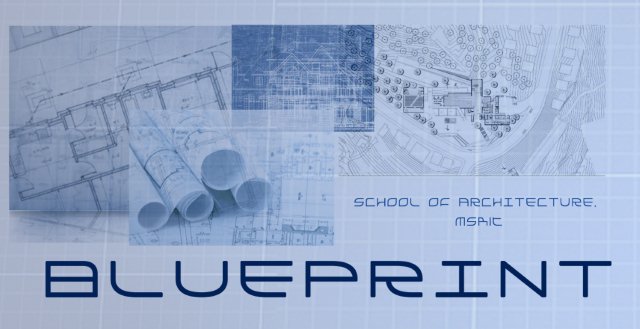~Anu Pallavi
(4th Sem) 1MS09
(4th Sem) 1MS09
Art
is an unavoidable element in the
architecture of any time period. its role is so pivotal that architecture
without the influence of art is next to impossible to find or create.
art
was a major form of expression or story telling even to the cave-man, who only
after a considerable amount of time, learnt to converse, invent and use
language; let alone build.
Since man started to build, we see the undeniable influence of art in all man-made
structures, right from the pre-historic caves to subterranean dry stone
huts to the stone-henge monument. what we can attribute to art here, is the way
man has used available material to sculpt a suitable shelter, and to create
progressively geometric patterned dwellings and ritual sites.
in
a similar chronological order, each historic event
and era in mankind’s history and efforts to build reminds us of how much we
intermingle art in our architecture. the great temples and tombs of the
egyptian civilization gain their glory not without the incised relief,
projecting ornaments and hieroglyphics to adorn their monumental walls. not to
mention geometric shapes used in a judicious composition in pyramids, etc.
the following eras in civilization equally
demonstrate that structural visual communication was not effective when devoid
of artistic touch. this is evident because the human mind is not stimulated or
inspired by monotony as in the case of the purely functional development of the
indus valley. in fact, lack of encouragement to artisans may even have caused
great internal turmoil leading to downfall of such an advanced settlement.
the
ziggurats, palatial forts and grand entrances of the mesopotamian era, the
temples and theatres of the hellenistic kingdoms, the roman temples, basilicas,
etc., are all radically different in their own ways and suggest that as
architecture has evolved, so has art that has made it so unique.
literature,
warfare, religion, beliefs and culture have all expressed themselves purely
through art in architecture of a place.
medieval artists depended on elements of the classical (roman),
early christian, and barbarian art to give character to their buildings. their
artistic media included fresco, mosaic, sculpture, manuscript illumination. the
most important contribution of art in this period is the use of roman forms and
styles including a proportional portrayal of the human body and impressionistic
presentation of space. motifs and iconography assume importance now.
romanesque, followed by gothic styles depict the dark ages as design evolved
and verticality of churches increase. ecclesiastical architecture evolves
similarly with advancement in baroque art
and sculpture that adorn international museums and cathedrals presently. use of
material such as marble, glass, etc., have also added new artistic dimensions
to architecture.
the renaissance
style places emphasis on symmetry, proportion, geometry and the regularity
of parts as they are demonstrated in the architecture of classical antiquity.
orderly arrangements of columns, pilasters and lintels,
as well as the use of semicircular arches, hemispherical domes and niches
and replaced the more complex proportional systems and irregular profiles of medieval buildings.
indian art and
art of the far east suggest strong religious convictions of the people. every
architectural element from pillars and stupas of buddhist era, capitals, temple
shikaras, domes of the islamic style, mausoleums, gopurams or vertical spires,
are all saturated with rich sculpture and religious forms indicating idol
worship, deity glorification and cultural symbolism indicating all these
existed simultaneously and influencing architectural heritage greatly.
neo-classical architecture is again greek-revivalist and is
robust within the limits of romantic sensibilities.
modern day art includes abstract and figurative expressionism,
art deco, pop art, funk art, cubism, post-modern art, cyber art, street art,
graffiti, and classical realism which have concurrently reflected in
architecture.
.jpg)
No comments:
Post a Comment